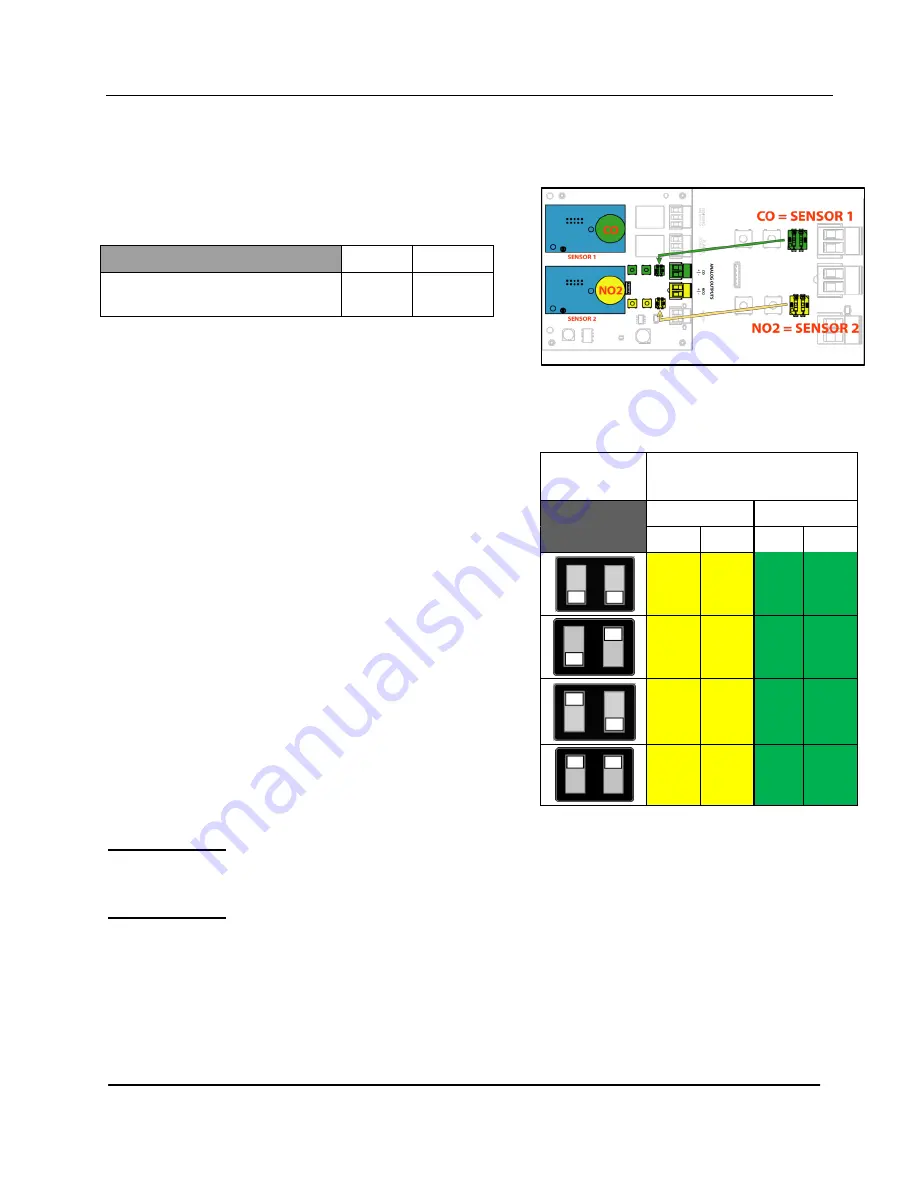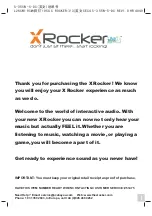
KCO-NO2 User’s Manual
90-0201-01
Kele • 3300 Brother Blvd. • Memphis, TN 38133
Page: 10
WWW.KELE.COM
Dipswitch
Setting
Threshold Set Points
[ppm]
NO
2
CO
Warn
Alarm
Warn
Alarm
0.7
2.0
15
30
1.0
3.0
25
40
2.0
2.0
30
45
2.5
4.5
35
45
FIGURE 8:
Setting Warn & Alarm Set points
Figure 7
: Dip Switch Locations. CO specific
adjustments and connections are highlighted
in yellow while NO
2
specific adjustments
and connections are in green.
4.3 Setting Warning and Alarm Threshold
The controller has a warning and alarm threshold for each gas. These threshold values can be
adjusted for each sensor via dip switches on the controller’s main board (shown in Figure 7) Refer
to details on setting the thresholds for each sensor in
Figure 8.
NO
2
CO
Federal OSHA Personal
Exposure Limit (PEL).
5 ppm
50 ppm
TABLE 5: Federal OHSA exposure limits
(29 CFR 1910.1051 TABLE Z-1)
4.4 Warning and Alarm Conditions
The controller has two LEDs on the front panel (one for
each sensor). These LEDs change color to indicate the
controller’s current operational status. Table 3 shows
the behavior of the front panel LEDs during normal
operation.
Two dry-contact SPDT relays are provided on the
controller, these relays activate during warning and
alarm conditions. Refer to
Section 3.3
for location and
wiring information.
Readings for the two sensors are independently reported
on the controller’s two 4 – 20mA powered current loop
outputs during normal operation. Theses outputs are
electrically isolated from the operating power
connection.
Table 2 lists the operational conditions that force the
analog outputs to their limits regardless of ambient gas
concentrations.
4.5 Abnormal operation
Both of these conditions will put the KCO-NO2 into
‘Sensor Error’ mode (see Table 2).
Sensor Expired
Happens only after a span calibration if the sensitivity of the sensor has decreased by more
than the manufacturers specification (usually 20%)
Sensor Failure:
Can happen at any time. Caused when the sensor supervision circuitry detects a catastrophic
loss of a senor’s sensitivity, usually caused by a depletion of the senor’s electrolyte through a
leak or evaporation.


































